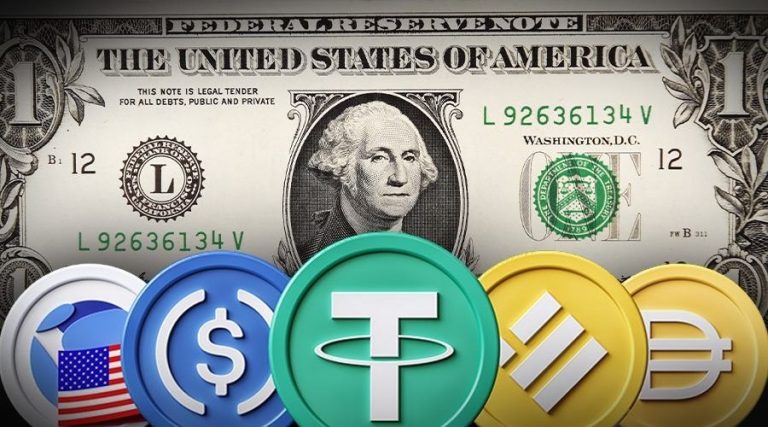
U.S. Treasury Secretary Scott Bessent has projected that dollar-linked stablecoins could exceed $2 trillion in market capitalization, reaffirming the administration’s view that these digital assets have the potential to reinforce the dollar’s global dominance and offer new momentum for the U.S. economy.
Speaking before a Senate Appropriations subcommittee on Wednesday, Bessent said the rise of stablecoins is part of a larger strategy to “enhance and preserve” the U.S. dollar’s position as the world’s reserve currency. He pointed to legislation currently being drafted in Congress that would mandate stablecoins to be fully backed by high-quality liquid assets, such as U.S. Treasury bills, to ensure stability and trust.
“This administration is committed to keeping the reserve currency status and enhancing that,” said Bessent, a veteran of global currency markets during his hedge fund career. “Stablecoin legislation backed by U.S. Treasuries or T-bills will create a market that will expand U.S. dollar usage via these stablecoins all around the world.”
Register for Tekedia Mini-MBA edition 19 (Feb 9 – May 2, 2026): big discounts for early bird.
Tekedia AI in Business Masterclass opens registrations.
Join Tekedia Capital Syndicate and co-invest in great global startups.
Register for Tekedia AI Lab: From Technical Design to Deployment (next edition begins Jan 24 2026).
Institutional Adoption Accelerates Stablecoin Expansion
Bessent’s bold $2 trillion projection comes amid a wave of institutional adoption of stablecoins in global finance. Major financial institutions including Visa, Mastercard, and PayPal have integrated stablecoin transactions into their networks, betting that tokenized dollars will play a central role in cross-border payments and programmable finance.
In late 2023, PayPal launched its own U.S. dollar-backed stablecoin, PYUSD, in partnership with Paxos Trust Company, with the goal of bridging traditional finance and blockchain-based systems. Similarly, Visa began testing USDC (a stablecoin issued by Circle) for settling payments on the Ethereum blockchain, an initiative that has since expanded to other platforms and regions.
Even banks that once viewed crypto with caution are now involved. JPMorgan Chase has developed its own JPM Coin, a digital token used internally for institutional settlements, while also exploring tokenized deposits and blockchain-based payment rails.
This momentum is part of why the U.S. government is now leaning into stablecoins as a lever for economic and financial policy. With trillions of dollars flowing globally in search of stable digital currencies, policymakers are aiming to cement the dollar’s place at the heart of digital trade by formalizing the rules of engagement through legislation.
Policy Support as a Strategic Move
Bessent’s remarks underscore a broader geopolitical and economic rationale: by ensuring that dollar-linked stablecoins are secure, transparent, and widely available, the U.S. can counter the rise of non-dollar digital currencies, especially state-backed versions like China’s digital yuan, and shore up demand for U.S. debt in the form of Treasury-backed reserves.
Citigroup earlier estimated that stablecoin-related purchases of Treasuries could surpass $1 trillion by 2030, but Bessent believes the ceiling could be far higher.
“I think that $2 trillion is a very, very reasonable number,” he said, “and I could see it greatly exceeding that.”
This forecast comes at a time when U.S. debt issuance is accelerating and the government is looking for new classes of investors to absorb that supply. Stablecoins, by their structure, naturally demand large amounts of Treasury assets for backing—making them a strategic tool not just for financial innovation, but for public finance stability.
At present, dollar-backed stablecoins such as USDT (Tether) and USDC (Circle) dominate the market, with a combined circulation of over $160 billion. But the market has evolved from retail-driven crypto speculation into one with institutional-grade infrastructure, compliance tools, and real-world use cases—including global remittances, trade finance, and on-chain treasury operations.
Even BlackRock, the world’s largest asset manager, has entered the space with its tokenized fund BUIDL, built on public blockchain networks and tied to U.S. dollars. These moves signify a shift in perception: stablecoins are no longer fringe fintech but a foundational part of the next generation of financial infrastructure.
In his testimony, Bessent positioned stablecoins not as a regulatory headache, but as a U.S. policy asset, capable of defending the dollar’s supremacy in a fast-changing digital world. This means that stablecoins are increasingly becoming the vehicle of choice for dollar usage abroad, especially in regions with limited access to U.S. banking, and Washington’s shift toward regulation and support signals a historic turning point in American monetary strategy.



